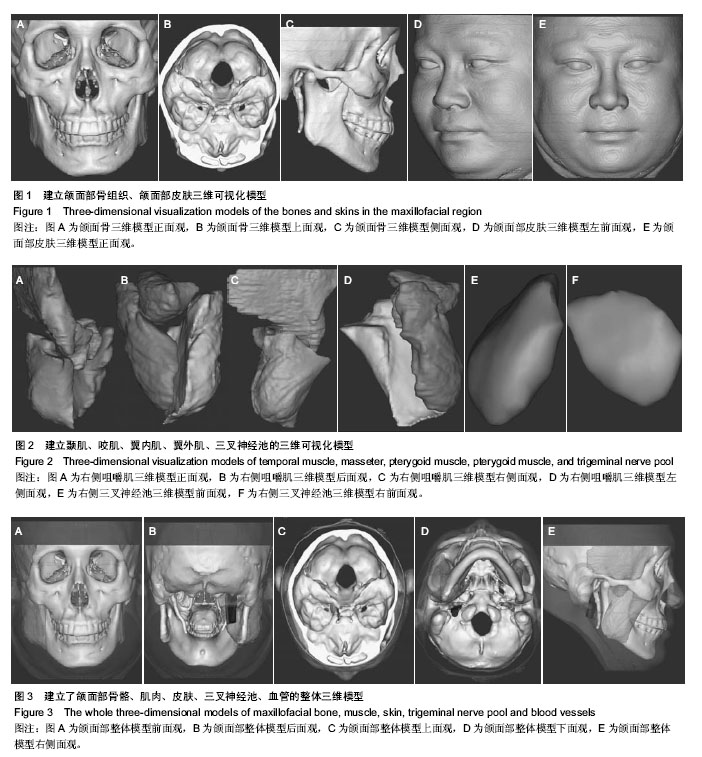| [1] 张剑,刘融,杨俊峰,等. Mimics软件重建在桡骨远端骨折手术中的应用[J].中国医药科学,2012,2(19):169-170.
[2] 刘融,张勇,张国华.术前三维可视化虚拟在发育性髋关节发育不良手术中的临床价值[J].中国现代医生,2013,51(32):51-52.
[3] 陈羽,宋烜,张海兵.三维重建及虚拟手术在复杂胫骨平台骨折治疗中的应用[J].中国组织工程研究,2013,17(39):6940-6945.
[4] 江春苗.胸部影像三维重建技术在肋骨骨折内固定术中的应用研究[D].暨南大学,2012.
[5] 林晓梅,裴建国,牛刚,等.医学图像三维重建方法的研究与实现[J].长春工业大学学报(自然科学版),2005,26(3):225-228.
[6] 张绍祥,刘正津.数字化可视人体研究[J].第三军医大学学报, 2003, 25(7):561-562.
[7] 赖仁发,周志迎,杨阳,等.螺旋 CT 三维重建在修复颌面部复杂骨骼中的应用[J].中华医学美学美容杂志,2003,9(1):27-29.
[8] 欧飞,段世均,张金鸽,等.颅颌面部畸形个体数字化修复技术的临床应用[J].中国组织工程研究与临床康复,2010,14(22):4032-4035.
[9] Xia J, Samman N. Computer-assisted three-dimensional surgical planning and simulation-3D virtualosteotomy. Int J OralMaxillofac Surg. 2000;29(1): 11-17.
[10] 邱蔚六.口腔颌面外科学[M].北京:人民卫生出版社,1999: 393- 395.
[11] 陈为霞,华伟,费洪钧,等.螺旋CT三维重建在口腔正畸中的应用60例临床体会[J].口腔医学,2006,26(5):344-345.
[12] 王铁梅,邹昌宁,葛久禹,等.螺旋CT三维重建对颌骨内埋伏牙定位研究[J].实用口腔医学杂志, 2006, 22(2):224-226.
[13] Proffit WR. Contemporary treatment of dentofacial deformity. Singapore: Elsevier company, 2006: 3-24.
[14] Tejszerska D, Wolański W, Larysz D, et al. Morphological analysis of the skull shape in craniosynostosis.Acta Bioeng Biomech. 2011;13(1):35-40.
[15] 范芦芳,徐浩铜,张正治,等. 利用 Mimics 软件构建人颅骨缺损区植入体的参数设置研究[J].第三军医大学学报,2011,33(9): 2093-2095.
[16] 贺佳,王钰,刘振兴.基于CT图像的颌面部模型三维重建方法[J]. 青岛大学学报(自然科学版),2010,23(2):28-30.
[17] 马如宇,铁瑛,薛文东,等.基于螺旋CT构建人体骨盆三维有限元模型[J]. 医学生物力学,2004,19(3):180-183.
[18] 段宝山,潘振宽.医学断层图像三维重建的辅助轮廓线法[J].计算机辅助设计与图形学学报,2005,17(8):186-187.
[19] 潘炜娟,张保卫,叶少波,等.牙齿与桩核三维有限元建模的初步探讨[J].口腔颌面修复学杂志, 2000, 1(3):143-144.
[20] 夏荣.有限元法及其进展(一)[J].中国口腔种植学杂志,1997,2(3): 96-100.
[21] 陈琼.三维有限元建模方法的研究现状[J].口腔医学,2006,26(2): 154-155.
[22] 步玮,崔慧先,赵庆林,等.基于CT图像构建颅骨三维有限元模型的研究[J].河北医药,2011,33(4):510-512.
[23] Kofod T, Cattaneo PM, Dalstra M, et al. Three dimentional finite element analysis of the mandible and temporomandibular joint during vertical ramaus elongation by distraction osteogenesis. J Craniof Surg. 2005;16(4):586-593.
[24] 邓锋,张磊,张翼,等.“微植体-上颌骨”三维有限元模型的建立[J].华西口腔医学杂志,2007,25(2):192-194.
[25] 付淼,解世洋,何叶松,等. 颌面部三维模型的建立[J].实验室研究与探索,2011,30(12):68-70.
[26] 欧阳振波,苏欢欢,尹倩,等.基于CT薄层扫描的骨盆数字化三维模型的分色构建[J].现代生物医学进展,2013,13(29):5782-5784.
[27] 胡辉莹,何忠杰,吕丽萍,等.应用 Mimics 软件辅助重建人体胸廓三维有限元模型的研究[J].解放军医学杂志,2008,33(3) :273-275.
[28] 刘登均,贺小兵,王明贵,等.Mimics软件在齿状突骨折诊断中的价值[J].局解手术学杂志,2012,21(1):10-11.
[29] 赵志河,房兵,赵美英.颅面骨三维有限元模型的建立[J].华西口腔医学杂志,1994,12(4):295-300.
[30] Fennis WMM, Kuijs RH, Verdonsehot N, et al. Generation of three dimensional finite element models of restored human teeth using micro CT techniques[C]. 12th Conference of the European Society of Biomechanics, Dublin, 2000:333-335.
[31] 关振群,石俊,李爱群,等.Mimics辅助快速建立颅上颌复合体的三维有限元模型[J].中国组织工程研究与临床康复,2011,15(43): 7998-8001. |
